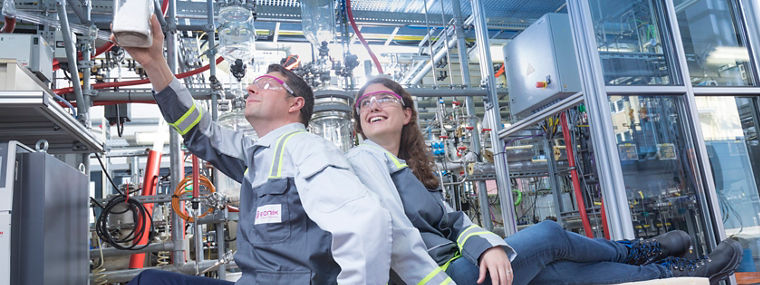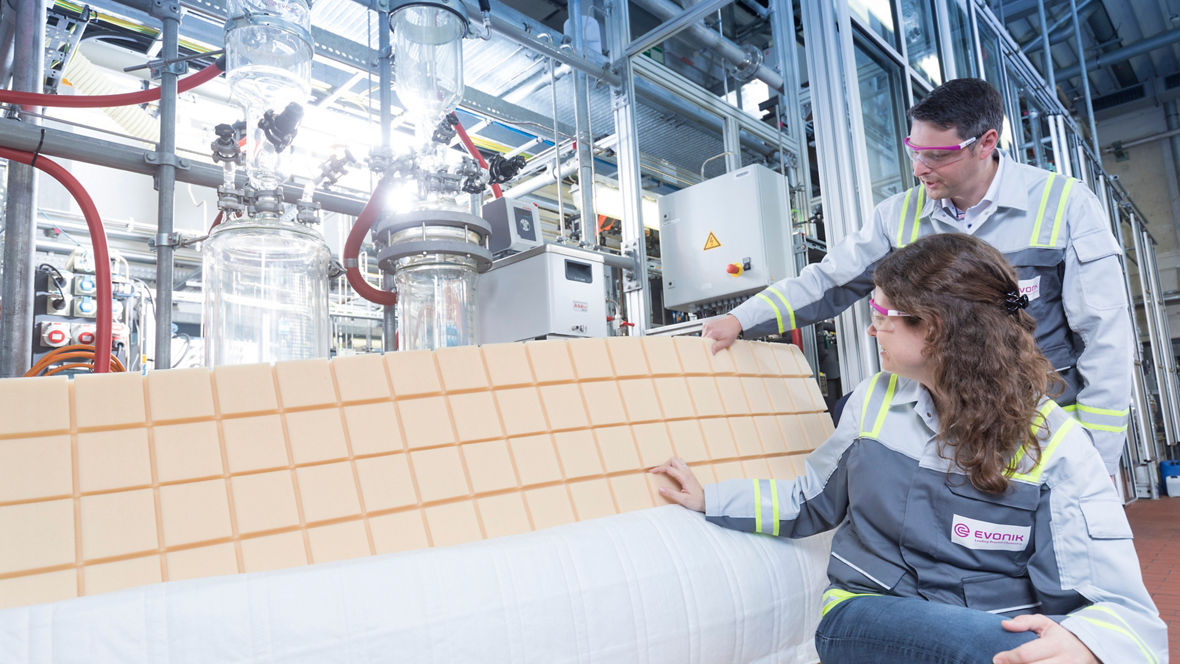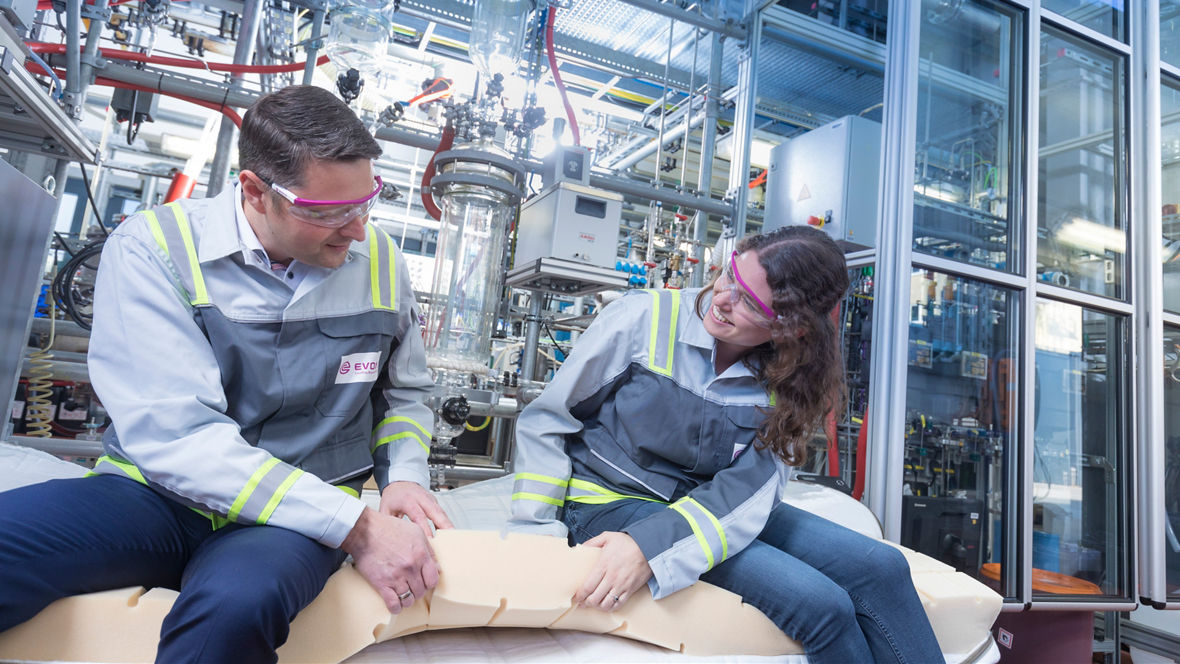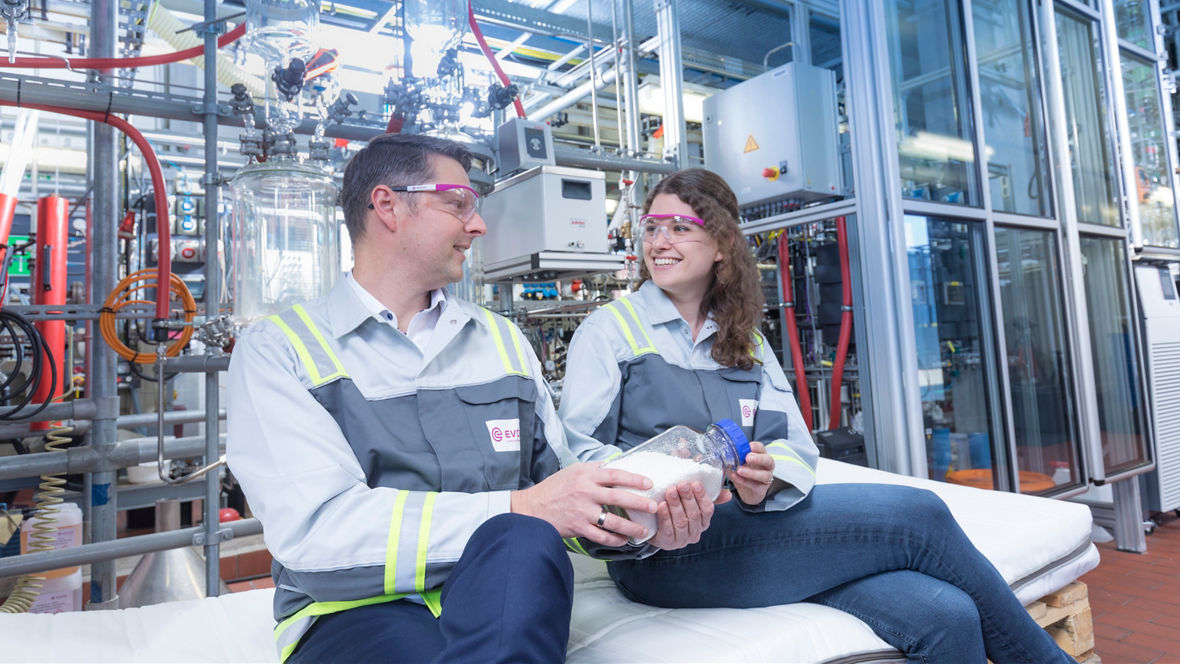
In keeping with its vision of closing raw material cycles, Evonik has developed an innovative hydrolysis process to recycle foam from end-of-life mattresses. At a pilot plant in Hanau (Germany), polyurethane foams are broken down into their basic chemical components, poylol and toluene diamine. These are subsequently reused in the production of new, high-quality polyurethane foams. This process is environmentally friendly because it reduces the use of petrochemical feedstocks and results in products with a lower carbon footprint. Around 40 million mattresses are discarded in the EU alone every year. They contain around 300,000 metric tons of polyurethane foam. However, only 17 percent of this is recycled—mainly for lower-value applications—while 33 percent lands in waste incinerators and 50 percent in landfills. With its new hydrolysis process, Evonik’s aspiration for the future is that new foams can be made almost entirely from recycled materials. The initial results are promising, and samples have already been delivered to customers such as The Vita Group. The next step in the project is a demonstration plant for larger-scale validation of the recycling process. Our partnership with REMONDIS concentrates on returning valuable materials to the production cycle. Complete separation of mattress waste at the disposal stage and the introduction of digital product passports could make recycling even simpler. Evonik hopes that its new process will make a significant contribution to the circularity of PU foams.
Further information:
Part 1: Sustainable mattresses or sweeter dreams
This website embeds YouTube videos. To load the YouTube player and view the video at this point, please first agree to the transfer of your personal data to Google. For more information, please see Evonik Privacy Policy
Dr. Thomas Rosen (Evonik) about additives for Polyurethan (PU) mattresses and their recycling.
Part 2: Sustainable mattresses or sweeter dreams
This website embeds YouTube videos. To load the YouTube player and view the video at this point, please first agree to the transfer of your personal data to Google. For more information, please see Evonik Privacy Policy
Dr. Emily Schweißinger from Evonik about the new way for recycling post consumer Polyurethan (PU) mattresses.
Part 3: Sustainable mattresses or sweeter dreams
This website embeds YouTube videos. To load the YouTube player and view the video at this point, please first agree to the transfer of your personal data to Google. For more information, please see Evonik Privacy Policy
Dr. Jens Hildebrand from Evonik about the hydrolytic depolymerization of polyurethanes to gain high quality monomers.



